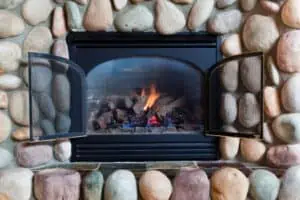How to Repair Loose Mortar in a Fireplace?
A fireplace is a wonderful source of warmth and beauty in cold weather, but sometimes the mortar around a firebox or chimney needs to be repaired. Before you begin repairing the mortar, it’s a good idea to know what you’re working with. You’ll also want to make sure that you follow the manufacturer’s instructions.
(Searching in Google “Fireplace Crack Repair“? Contact us today!)

First, you’ll need to clean the bricks. This means removing any soot and dust from the mortar and the bricks themselves. You can use a pressure washer or wire brush to remove the debris. After cleaning, you can then apply fresh mortar to the joints. For a clean and neat look, be sure to smooth out the joint with a tuck-point trowel.
Once the mortar has dried, you can fill in the joints with a grout bag. The mortar should be mixed according to the manufacturer’s directions. Typically, it’s recommended to mix the mortar by hand, but you can also use a mortar mixer.
Next, you’ll need to clean out the mortar holes. If the mortar is loose, it can easily dislodge the bricks. Using a sharp chisel or carbide-tipped scoring tool, you can scrape out the mortar. Alternatively, a grinder with a special tuck-point blade can remove the crumbling mortar.
In addition to repairing mortar joints, you should also check for cracks. When the mortar isn’t properly sealed, it can allow heat to seep through. You can repair cracks by pushing back the cement. Depending on how big the crack is, you may need to fill the crack with more mortar.
Repointing is another method for repairing a fireplace. It involves replacing the mortar. However, you will need to use a different type of mortar. Instead of the traditional mortar that’s used in brickwork, you’ll use a special high-temperature caulk. As long as you follow the manufacturer’s instructions, repointing is not a difficult task.
If your fireplace is damaged, it’s a good idea to contact a professional to perform the job. Make sure to find an experienced fireplace repair specialist who has testimonials. He or she can ensure that the repair is done correctly.
Depending on the type of mortar you use, the drying time can vary. Regardless, you’ll need to let the mortar dry for at least 48 hours. Some of the more common types of mortar are Type S and Type N. Generally, brickworkers will use Type S mortar for horizontal joints and Type N for vertical joints.
To repair the chimney mortar, you’ll need to prepare the area. Make sure that the air is dry before you begin. If you live in an area that has very high humidity, you might want to cover the area with a plastic sheet. Otherwise, you’ll need to spray water into the joints before you begin applying the new mortar.
During this process, you’ll need to use your dominant hand to guide the nozzle and the other hand to squash any air pockets. This should be done starting at the top of the chimney and working your way down. By doing this, you’ll be able to visually verify that the mortar has penetrated deep into the joints.

